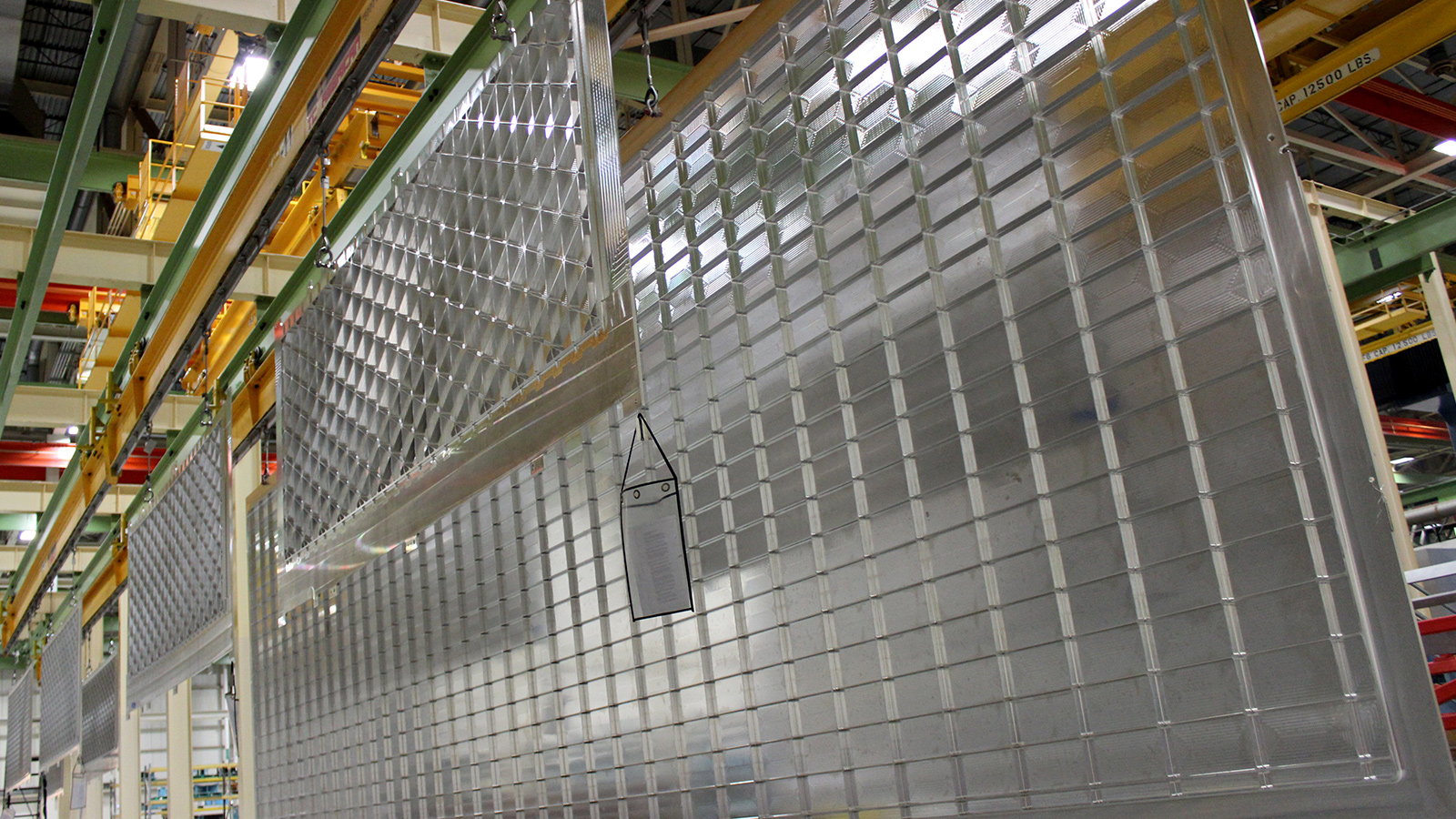Stay Up to Date
Submit your email address to receive the latest industry and Aerospace America news.
The United Launch Alliance rocket's first flight will carry a lunar lander
DECATUR, Alabama — There’re many sights you might expect to see when visiting a rocket factory: machinery, half-assembled pieces, maybe even a complete rocket if you’re lucky.
What might be unexpected are the golf carts that are the most common method of transportation here at the United Launch Alliance facility. Everywhere I look, engineers zoom from one end of the 1.6-million-square-foot building to the other, careful to steer around the silver rings and domes on the floor that will soon be parts of the first Vulcan Centaur, the rocket ULA is counting on to launch everything from small satellites to astronauts to low Earth orbit and beyond.
“We know Vulcan is our future,” Zeke Terry, a ULA project manager who’s heading Vulcan manufacturing, tells me as he ferries me around the facility where Vulcan will come to life.
That’s not the only work that goes on here, of course. The Decatur building has been home to both Boeing’s Delta and Lockheed Martin’s Atlas rockets since 2006, when the two companies’ launch divisions joined forces to create ULA, a separate entity that does national security launches for the U.S. military and the National Reconnaissance Office spy-satellite agency, as well as for NASA and NOAA. The facility has about 30 upper and lower stages in various phases of production for the next several Atlas and Delta launches, plus a completed Vulcan booster for structural testing.
We start our tour at the northeast corner of the factory, where the first pieces of hardware for Vulcan’s first flight are coming together. Terry shows me inch-thick sheets of aluminum that will be pressed by machines between two blunt knife edges and curved to form the outer shell of a Vulcan booster. Some still-flat sheets hang next to the machine, awaiting their turn in the press, indistinguishable from the sheets that will encase an Atlas booster except for the different pattern marking what will be the inside of the panels.
That similarity is intentional. The new design will have many of the same components as the Atlas V rockets in order to streamline production. ULA announced the Vulcans in 2015 and began manufacturing this year. The biggest overlap is the Centaur III upper stage on Atlas that is being enlarged to hold two engines instead of one.
“The objective for us was to take the best of both worlds from the two and make it into one,” Terry says. “Each one of those engineering designs went through an analysis to say what did we have, what is the best to give us the most efficient, cheapest vehicle that we can build to make sure that we can launch on time, a 100% mission success and be competitive.”
Vulcan is on track for its 2021 debut, ULA CEO Tory Bruno told me last week at AIAA’s Propulsion and Energy Forum in Indianapolis, and the company is “confident to go directly to real missions with real customers on our first flights.”
ULA announced earlier this month that Vulcan’s first flight will be launching the Peregrine lunar lander from Astrobotic, one of two companies NASA has tasked with sending robotic landers to the moon ahead of the 2024 landing under the Commercial Lunar Payloads Services program, or CLPS. The second flight is scheduled for later that year with the first of six cargo resupply missions with Sierra Nevada Corp.’s Dream Chaser vehicle to the International Space Station.
But before production on the Vulcans that will launch those missions can begin in earnest, the rocket’s main components must be tested. Terry lays out the timeline as we zoom back to the entrance of the production floor: Testing with the structural test booster will begin in September, and two test articles of the Centaur upper stage are next in line. They will be sent to NASA’s Marshall Space Flight Center in Huntsville in 2020.
Once that’s done, “we’re focused on the first flight and making sure we have a vehicle to fly,” Terry says.
About cat hofacker
Cat helps guide our coverage and keeps production of the print magazine on schedule. She became associate editor in 2021 after two years as our staff reporter. Cat joined us in 2019 after covering the 2018 congressional midterm elections as an intern for USA Today.
Related Posts
Stay Up to Date
Submit your email address to receive the latest industry and Aerospace America news.





